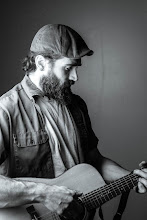Responses...#1
I figured the best way to share what I've been thinking is to post what I've already written as responses to the book that have gotten me thinking (does that make sense?). They might not make perfect sense, unless you've read the books, but I tend to develop my own thought process rather than simply regurgitate the book, especially in the later responses, so they should be OK. This one is my response to Polanyi's Tacit Dimension.
It is fitting that this work evoked from me the response that it did. As I read the Tacit Knowing lecture, the foundation of Longing to Know, I was enlightened to a more foundational application of the process of tacit knowing. The lecture, as one would expect, clearly supported the points of Longing to Know: clues, focus, patterns, submission, integration, and confidence. However, the language used by Polanyi was much more visceral; not simpler or even more applicable, but more foundational. Now, don’t misunderstand me, Dr. Meek wrote Longing to Know to a much different and broader audience than Polanyi wrote Tacit Knowing to, and it does its intended job of introducing the non-philosopher to the process of tacit knowing very well (I don’t think I would have been able to get past the first paragraph of Polanyi without having read Meek first). But there was something about how Polanyi himself explained his theory that made it much more profound to me. Dr. Meek went about explaining the process largely by using events and instances that we encounter in our lives; for example, the snake in the woods, and especially the comforting and congealing analogies to her relationship with her auto mechanic. Polanyi, probably because of his background and intended audience, however, explained the process through biological processes; muscle twitches, undetectable by the person himself, in order to gain the cessation of a loud noise, even the way our eyes see things. This aspect of tacit knowing does not in any way contradict or redirect Dr. Meek, rather it expounds on it. It roots tacit knowing in a deeper way to all people as a process on the most basic, autonomous level. We are designed for this process. This is what I believe Polanyi meant by saying that his is a “novel idea of human knowledge from which a harmonious view of thought and existence, rooted in the universe….” (Tacit Dimension, pg. 4).
As I read Longing to Know for the first time, I charged out head-long looking for clues and determining patterns. It was exhausting. My mission slowly evolved from one of action to one of awareness as I began to get the sense of a responsibility on the part of the knower which I couldn’t really verbalize at the time. After reading Tacit Knowing, I see that responsibility as simply allowing the process to take place without interfering. It is important to know how we know, as it serves to change our motive and method in life, but it is equally important to understand that the process of tacit knowing is not ours to manipulate. Manipulation is interference and it changes that which we are coming to know. It changes the whole of which the parts attend to. There is almost a danger in writings such as Tacit Knowing and Longing to Know for this very reason.
Overall, I felt that this reading expounded on Longing to Know as it caused me to come away from it with a better understanding of, and greater appreciation for, the term “the lived feel of the thing.” To have an understanding, a gut feeling of what this process is about is far more important than understanding every aspect of it. Polanyi himself stated that, “It brings home to us that it is not by looking at things, but by dwelling in them, that we understand their joint meaning.” (Tacit Dimension, pg. 18)


0 Comments:
Post a Comment
<< Home